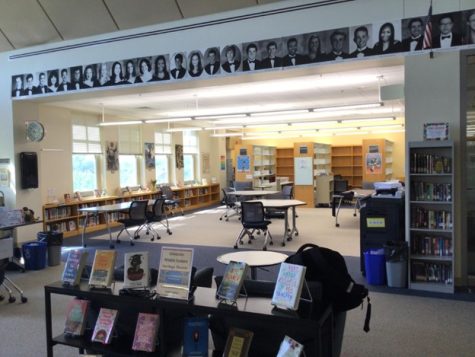10 Things You Need to Know About the Protests in Iran
1. The protests began Thursday, December 28, 2017 as a reaction to increasing prices on fuel and food, corruption, and the failing economy. Experts say this anger is fueled by the expectation that Iranian quality of life would get better once severe sanctions were lifted from the P5+1 (China, France, Russia, the United Kingdom, the United States, and finally Germany, joined together to work on negotiations regarding Iran’s nuclear program).
2. The reformists and conservatives, the two major political factions in Iran, have been controlling Iran since its post-revolutionary state. Reformists support Iran’s transition to become more democratic through gradual changes, whereas conservatives prefer maintaining the status quo of authoritarian rule. The riots were reportedly started by conservatives who disagree with President Rouhani’s domestic and international policies that caused economic strife and led to the country being sanctioned.
3. According to Alireza Nader, a senior international analyst and Iran researcher at the Rand Corp. in Washington, DC, the people have lost trust in President Rouhani because “The government is viewed as highly corrupt,” and “increasing inequality is seen by the population as really a form of injustice [because] this was supposed to be a system that delivered justice to the people after the revolution of 1979 and it has failed.”
4. Such a large display of public displeasure has not occurred since the 2009 Green Movement in Iran which resulted in over 400 deaths, social media restriction, and Iranian government pushback.
5. The stark contrast between the protests in 2009 and those now are that the Iranian people have been publicly discussing their discontent about the economic situation as well as publicly airing their grievances against their Supreme Leader’s rule, Khamenei.
6. Although the protests were initially focused on displaying the economic grievances in Iran, they have shifted to expose the deep divisions within Iran’s society among those in the urban and rural sectors.
7. These new protesters are young Iranians who are angered by the lack of opportunities economically. Women in Iran have been an untapped source in the work field. The unemployment rate in Iran is about 24% in the 15-24 age group. Although data displays a growth of economic participation among Iranian women, this does not necessarily mean that there are more jobs for them, but that more women are looking for jobs.
8. President Trump has expressed critical rhetoric towards the Iranian regime and support for anti-government protests via twitter, claiming that:
“Iran is failing at every level despite the terrible deal made with them by the Obama Administration”
“The great Iranian people have been repressed for many years. They are hungry for food & for freedom. Along with human rights, the wealth of Iran is being looted. TIME FOR CHANGE!”
“Big protests in Iran. The people are finally getting wise as to how their money and wealth is being stolen and squandered on terrorism. Looks like they will not take it any longer. The USA is watching very closely for human rights violations!”
Currently, President Trump faces the issue of whether or not to renew waivers for US sanctions against Iran. There is some debate over whether Rouhani’s missile program is in breach of the nuclear deal, but there will be a definite answer soon. Perhaps Trump’s negative attitude against the Iran Nuclear Deal and support for anti-government protests foreshadows the decision he will make in mid-January.
9. What U.S. Officials Are Saying About the Protests in Iran
Texas Rep. Will Hurd (R) :“The oppressive Iranian regime is of course trying to suppress the fact that protests against their tyrannical reign are popping up across Iran…The Ayatollahs are out of touch with their citizens and are exporting terror abroad. We should support a free and peaceful Iran. We should support the people of Iran who have had enough.”
United States Ambassador to the United Nations, Nikki Haley (R) : “This is a matter of fundamental human rights for the Iranian people, but it is also a matter of international peace and security,”
Secretary of State, Rex Tillerson (R) : “the Iranians have suffered under this regime…But we always support a peaceful transition of power. We do not support violent transitions of power, but we do support peaceful transitions of power, and we’ve seen those expressions in years past with the large demonstrations at elections in 2009, the demonstrations that we see in the streets today.”
Official U.S. Statement: “We are following reports of multiple peaceful protests by Iranian citizens in cities across the country…As President Trump has said, the longest-suffering victims of Iran’s leaders are Iran’s own people. The United States strongly condemns the arrest of peaceful protesters. We urge all nations to publicly support the Iranian people and their demands for basic rights and an end to corruption.”
10. According to Los Angeles Times Tehran, protests have decreased in size but are still continuing. But the real question is what the reaction of the young, Iranian protesters will be come mid-January. This battle for the future of Iran is far from over.
Sources:
Andone, Dakin; Gast, Phil; and Fox Kara. “Here’s why the Iran protests are significant.” CNN, 3 January 2018, http://www.cnn.com/2017/12/30/world/iran-protests-issues/index.html.
Eltagouri,Marwa. “Tens of thousands of people have protested in Iran. Here’s why.” TheWashingtonPost, 3 January 2018, https://www.washingtonpost.com/news/worldviews/wp/2018/01/03/tens-of-thousands-of-people-protested-in-iran-this-week-heres-why/?utm_term=.f323067f3161.
“Iranian Women’s Unemployment Rate Soars.” FinancialTribune, 17 September 2017, https://financialtribune.com/articles/people/72455/iranian-women-s-unemployment-rate-soars.










